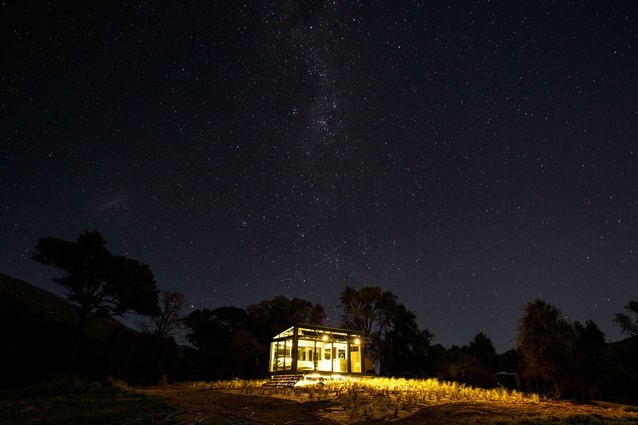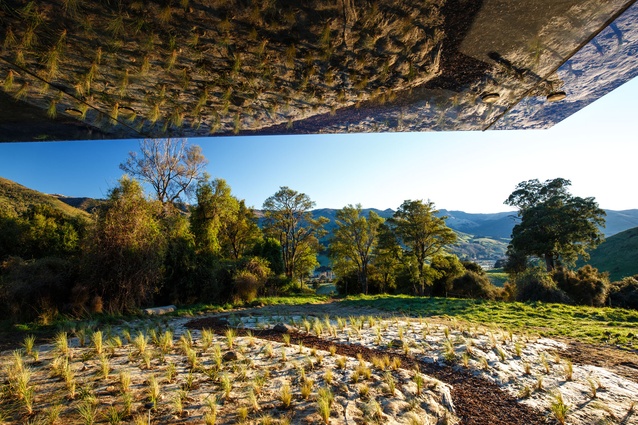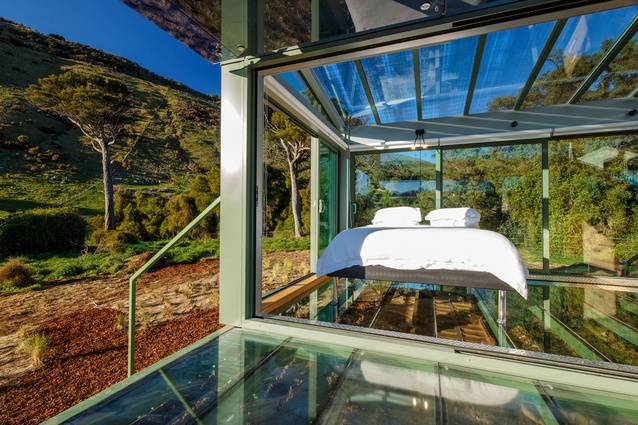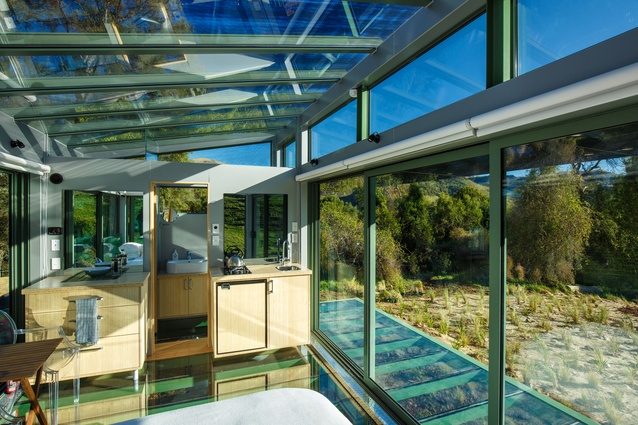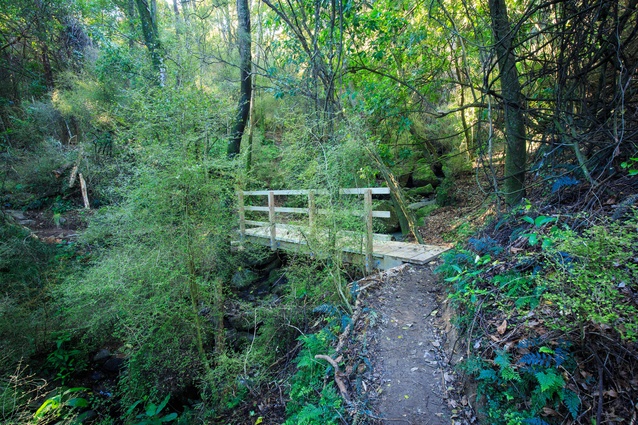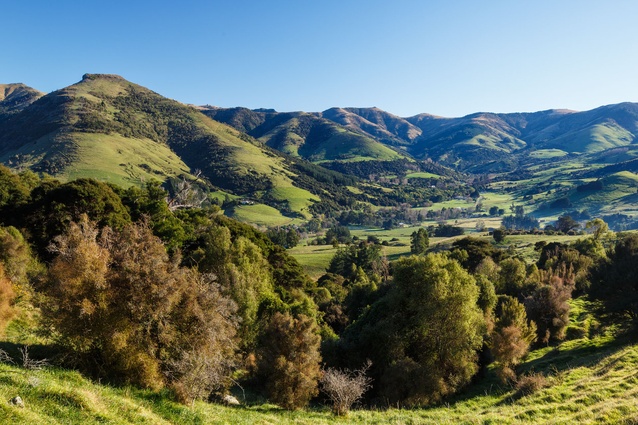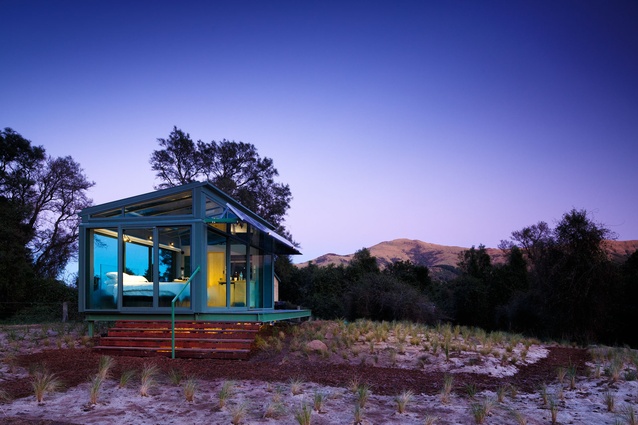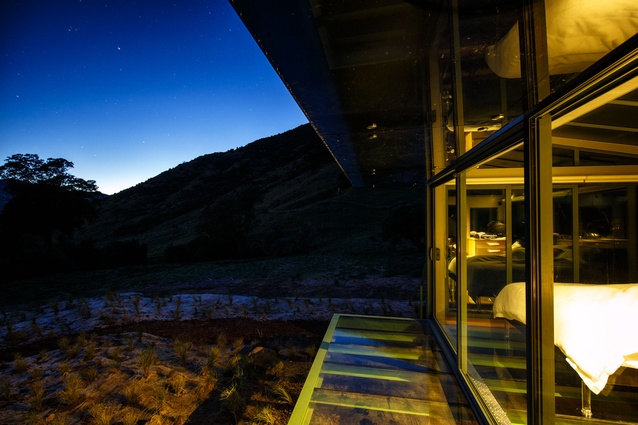The great wide open
Nestled into the Banks Peninsula hillsides above the rural township of Little River lies a small, modernistic and almost totally transparent hut.
With glass walls, roof and floor, that give way to expansive views over Lake Forsyth and the surrounding volcanic valleys, it gives a visceral experience reminiscent of Roald Dahl’s Great Glass Elevator. Coined as the ‘PurePod’, it provides a curated, orchestrated – and remarkably comfortable – perspective on the intrepid relationship between New Zealanders and the landscape.
Born from the mind of entrepreneur Grant Ryan, who also conceptualized the ‘YikeBike’, PurePods are a reaction to the frequent encounter of accommodation that ‘celebrates’ the surrounding landscape with cinder block walls. In this way the PurePod is posed as a lookout rather than a building; idealistically maintaining a standard of comfort only up to the point where the surroundings and locality can be deeply enjoyed. That said, its viability as a ‘glamping’ destination requires a baseline of warmth, easy-functioning utilities and general comfort, creating a tension between touristic usability and its landscape-immersive intentions. This is compensated for with understated materiality, construction and scale.
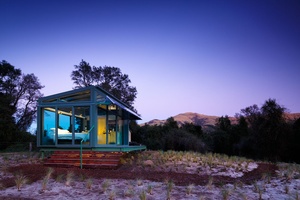
This outlook of minimal intrusion is likewise adopted with the landscape design. A 600-meter DOC-style track leads to the PurePod, sympathetically following the contours of the lowland forest and its chaperoning canopy trees, ever-balanced between walkability and unobtrusiveness. The cost is that within five months of being built the forest has already begun to reclaim the track. Learning from the failures of intervention upon the landscape, the planting directly surrounding and flowing under the PurePod is a catalyst rather than a hindrance to the existing ecosystems.
The site is divided into two key landscape typologies: the recently converted pastureland on which the PurePod sits, and the neighbouring regenerating covenant forest. Planting related to the pastureland reintroduces and encourages the spread of endemic tussock species such as poacita and Banks Peninsula blue tussock. Married together through a wavering border, the forest-related plantings entice fauna and the ensuing spread of flora from the neighbouring covenant with Dianella and Libertia alongside a ground covering of ferns that spread under the Pod.
Both the pasture and forest-orientated plantings use fields of singular species intermingled with point plants to draw the eye out and through the stands of mature kowhai and matai. Gentle undulations formed in the ground emphasize this effect, while also folding the PurePod and its meandering path into the landscape.
As intended, the site is quickly developing into a seemingly untamed cloud of planting that sweeps past and surrounds the PurePod. Partnered with the defining transparency of the building, this blurs the outside-inside division of landscape architecture and structural architecture. Eventually, the PurePod will be more strongly defined by the maturing growth of the landscape, and take a lesser influence from its construction materials.
With a broader vision of spreading the PurePods franchise as a network throughout New Zealand, the grand variety and character of our landscapes give the potential for each PurePod to impact the occupier in a new and powerful way.

